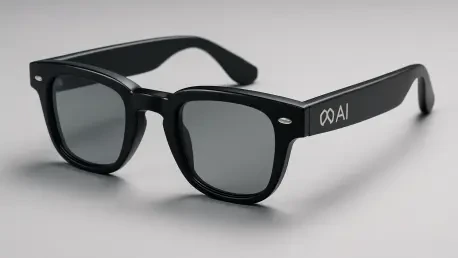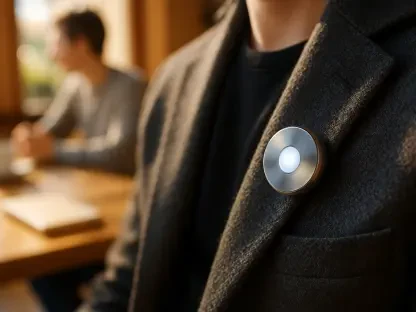Imagine a scenario where a simple pair of glasses does more than correct vision—it deciphers the world around you, responds to spoken queries, and guides you through daily tasks without ever needing to glance at a phone. Meta AI Glasses, crafted in collaboration with renowned eyewear brands like Ray-Ban and Oakley, are pioneering a new era of wearable technology. These innovative smart glasses merge augmented reality (AR), cutting-edge computer vision, and voice-activated artificial intelligence to create an unprecedented connection between physical surroundings and digital information. Far beyond traditional eyewear, they act as a personal assistant embedded in a stylish frame, enhancing how users see and hear their environment. This technology promises to redefine everyday interactions by making them more intuitive, seamless, and efficient, setting a new standard for what accessories can achieve. The impact of such advancements hints at a future where digital assistance is as natural as wearing glasses.
Unveiling the Core Technology
The foundation of Meta AI Glasses lies in their sophisticated computer vision capabilities, driven by high-resolution cameras and intricate algorithms. This technology empowers the glasses to instantly recognize objects, interpret text, and even identify faces, projecting relevant data directly into the wearer’s line of sight. Such functionality transforms a mundane glance into an informative experience, where a street sign could trigger navigational cues or a product could display its details without any manual input. It’s a leap forward in how visual information is processed and presented, offering a layer of understanding that feels almost instinctive. This real-time analysis not only saves time but also enriches the user’s interaction with their surroundings, making the environment a canvas of actionable insights.
Complementing this visual intelligence is the robust voice AI system integrated into Meta AI Glasses, supported by an advanced array of microphones. Users can engage with the technology through natural speech, posing questions or giving commands even amidst background noise. Whether seeking weather updates or requesting a quick reminder, the glasses respond with clarity and precision, ensuring accessibility in diverse settings. This hands-free approach eliminates the need for physical interaction with devices, streamlining communication in a way that feels effortless. The marriage of auditory and visual AI creates a dynamic interface that mirrors human perception, pushing the boundaries of how technology integrates into daily life with subtlety and power.
Crafting a Personalized Experience
One of the standout features of Meta AI Glasses is their ability to tailor interactions based on individual context, achieved through an array of innovative sensors. Eye-tracking technology monitors where attention is directed, ensuring that displayed information aligns with the user’s focus, while ambient light detectors adjust screen brightness for optimal visibility in any environment. Additionally, tools like the Meta Neural Band enable gesture-based control by detecting subtle muscle movements, allowing discreet activation of features. This contextual awareness means that the glasses adapt dynamically, whether the user is in a bustling city or a quiet office, delivering data that’s always relevant and timely. Such personalization elevates the user experience to a level of intimacy rarely seen in wearable tech.
This adaptive nature extends beyond mere technical adjustments, fostering a sense of connection between the user and the device. As the glasses learn from interactions and environmental cues, they refine their responses to better suit specific habits and preferences. For instance, navigation prompts might prioritize frequently visited locations, or language settings could default to commonly encountered dialects. This ongoing customization ensures that the technology feels less like a tool and more like an extension of the user’s own senses, blending seamlessly into varied lifestyles. The result is an interaction model that anticipates needs before they’re even articulated, setting a new benchmark for intuitive design in smart wearables and redefining personal assistance.
Revolutionizing Everyday Interactions
The practical applications of Meta AI Glasses are vast, turning routine activities into enhanced experiences with remarkable ease. Navigation becomes a breeze as directional overlays appear directly in the field of vision, guiding users through unfamiliar streets without the distraction of looking down at a device. Language barriers diminish with real-time translation and live captions, enabling fluid communication in foreign settings or during complex conversations. Even mundane tasks like shopping are transformed, as the glasses can identify products and provide instant details or reviews, making informed decisions simpler. These capabilities demonstrate how the technology integrates into daily life, addressing common challenges with innovative solutions that save time and effort.
Beyond convenience, Meta AI Glasses significantly boost productivity and connectivity in both personal and professional spheres. Hands-free calling and messaging allow users to stay in touch without interrupting their workflow, while a built-in digital assistant manages schedules, sets reminders, and provides updates on the go. This level of integration means that critical tasks no longer require pausing to interact with a separate device, fostering a smoother, more efficient routine. Whether it’s coordinating a busy day or staying connected during travel, the glasses serve as a versatile companion that enhances focus and accessibility. Their ability to handle diverse needs positions them as indispensable tools for modern living, reshaping how daily responsibilities are approached.
Balancing Style with Functionality
Meta has placed a strong emphasis on design, ensuring that Meta AI Glasses are as appealing to wear as they are innovative to use. Models like the Ray-Ban Display blend timeless eyewear aesthetics with futuristic features, avoiding the bulky, tech-heavy look often associated with smart devices. Lightweight construction ensures comfort during prolonged wear, while select models offer water resistance, catering to active users who need durability in challenging conditions. Compatibility with prescription lenses further broadens their appeal, making them accessible to a wide range of individuals with varying vision needs. This focus on style and practicality reflects a commitment to integrating advanced technology into everyday fashion without compromise.
Functionality is equally prioritized through thoughtful design elements that support real-world use. Battery life is optimized for extended periods, with portable charging cases providing convenience for those on the move, ensuring the glasses remain powered throughout the day. Adjustable display brightness adapts to different lighting conditions for clear visibility, while ergonomic considerations prevent discomfort even after hours of wear. These features collectively demonstrate an intent to make the glasses a natural part of daily routines, suitable for casual outings or demanding schedules alike. By striking a balance between aesthetic appeal and practical utility, Meta AI Glasses redefine what wearable technology can offer, merging innovation with accessibility for diverse user bases.
Envisioning Future Impacts
Looking ahead, the potential of Meta AI Glasses to reshape personal technology is profound, as they pave the way for broader adoption of augmented reality in everyday life. Their current capabilities already hint at a shift away from traditional devices like smartphones for tasks such as navigation, communication, and information access. As enhancements in AI processing and battery efficiency emerge over the coming years, starting from now through to 2027, these glasses are expected to become even more integral to daily interactions. Expansion into additional markets and the introduction of more affordable models will likely democratize access, bringing this transformative tech to a global audience. The trajectory suggests a future where such wearables are commonplace, fundamentally altering how digital tools are perceived.
Reflecting on their impact, Meta AI Glasses have already demonstrated a remarkable ability to enhance human perception through seamless integration of digital and physical worlds. Their introduction marked a pivotal moment in wearable tech, offering solutions that were once the realm of science fiction. As challenges like cost and regional availability were addressed in initial rollouts, the groundwork was laid for widespread acceptance. Moving forward, stakeholders should focus on refining user feedback mechanisms and accelerating feature development to stay ahead of evolving needs. The legacy of these glasses lies in their capacity to inspire further innovation, encouraging a landscape where technology empowers rather than intrudes, ensuring that future generations inherit a world of effortless, intelligent assistance.









